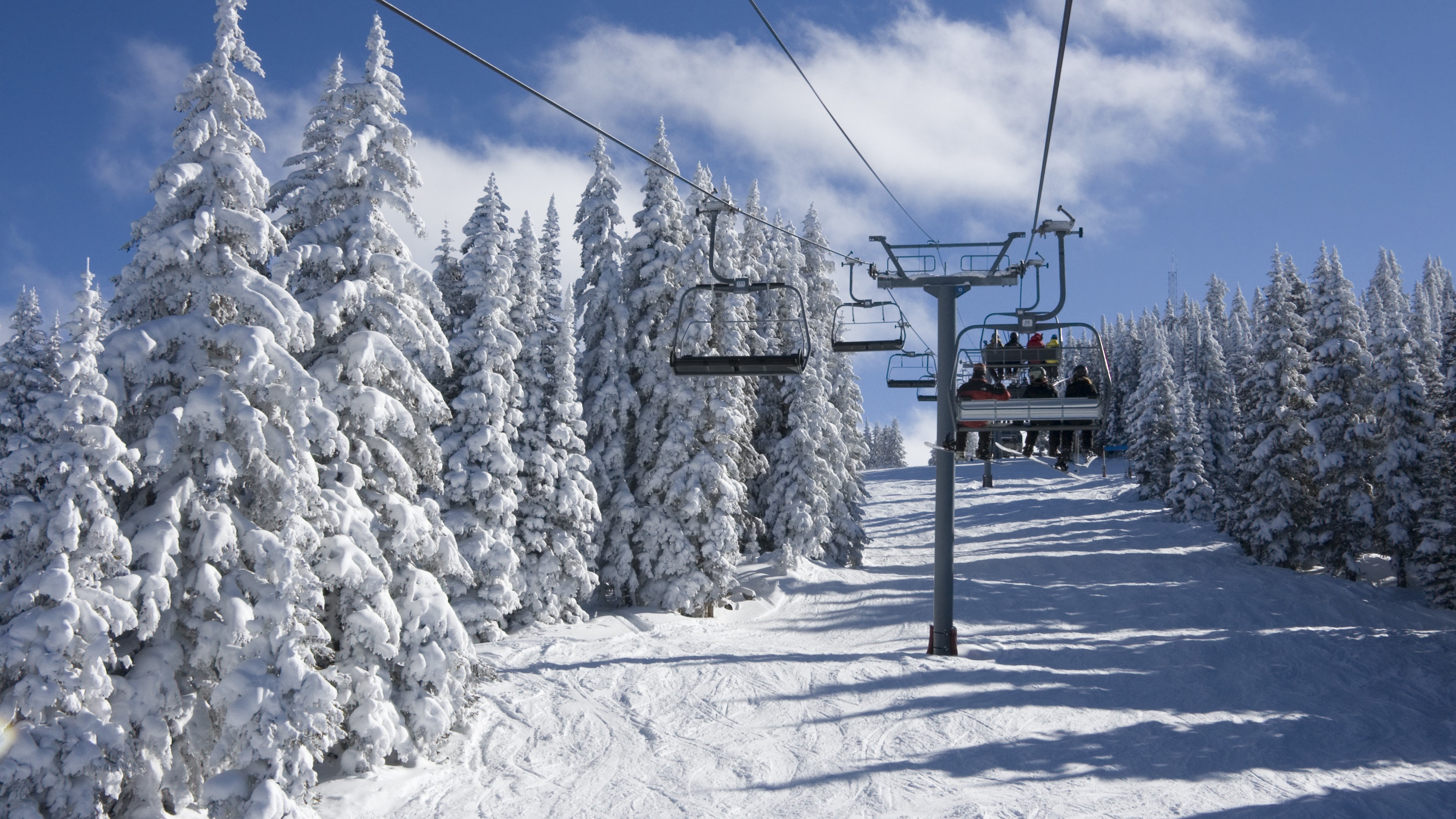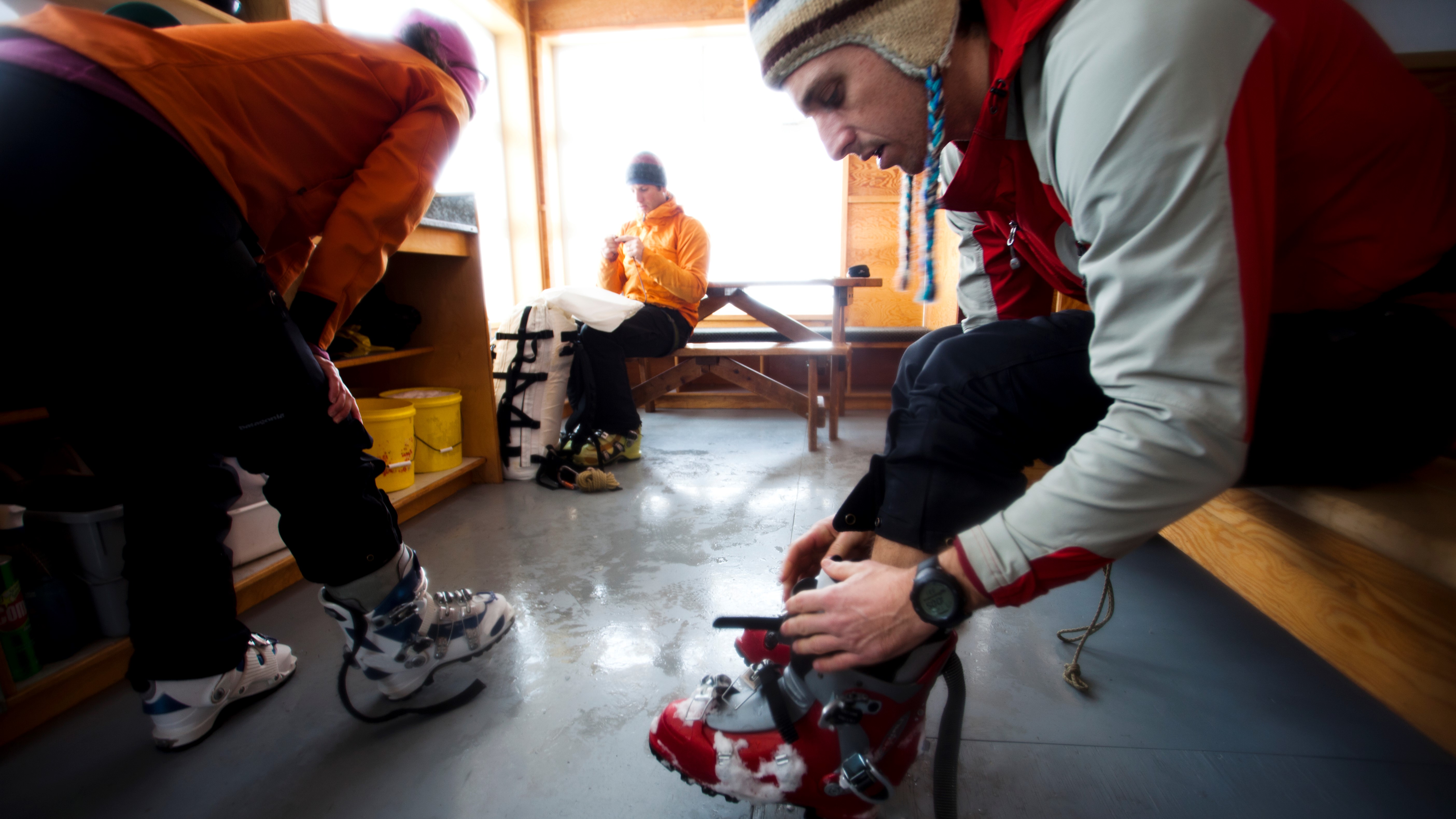Can skiing really be eco-friendly? And how can you be a more sustainable skier?
With warming temperatures threatening the future of skiing, it’s vital for skiers to step up and make the sport more sustainable

Skiing is a magical experience. You pull on your ski jacket and hop on a high speed chairlift that whisks you thousands of feet up a snow-shrouded mountain in mere minutes. You spend the day cruising around on the sparkling white stuff. Everyone is all smiles.
It’s such a joyful activity that last year, when a study by University of Waterloo researchers suggested that most skiing will no longer exist by the end of the century, people took notice. The effects of climate change on skiing are hard to miss – already this year, lack of snow and warm temperatures forced one Montana ski area to shut its doors in the dead of winter. If we don’t change our ways, ski lifts will one day exist solely to serve hikers and mountain bikers.
But what about the ski industry’s effect on global warming? That’s right, while there’s one conversation about how climate change might affect skiing, there’s a parallel discussion taking place on how the ski industry is contributing to a warming planet and disrupting local ecosystems.
Last year, I spoke to Kim Schlaepfer on this topic – she is the project manager of the Climate Action Collaborative at Walking Mountains Science Center in Eagle County, home to Vail and Beaver Creek ski resorts. She explained that per capita greenhouse gas emissions in that county are higher than anywhere else in the country. That’s mostly down to the snowmelt systems in place at these luxury resorts which ensure snow and ice-free sidewalks and roofs, combined with a high inventory of second homes and tourism traffic that cause the issue.

However, if you think that greenhouse gas emissions are just the problem of high end ski resorts in the Rockies, think again. A 2017 study in the Journal of Sport and Tourism looked at skiers in Germany and found that the average annual carbon footprint of winter sports tourists was 431.6 kg of carbon dioxide equivalent emissions. Unless you’re a carbon expert, it’s a bit hard to know what that means, other than it’s about the same weight as a grand piano, but for some perspective, an eight-year study of tourists to Morocco found that the average per capita emissions were 0.416 kg. So needless to say that while tourism in general is a problem, snow sports tourism increases your impact nearly one thousand fold.
There are lots of factors that contribute to the high carbon footprint of the ski industry, starting with the infrastructure itself which means energy-intensive ski lifts in place of trees and the uprooting of local wildlife. Then there are the water-guzzling snow making cannons which bulk up the snowpack and that’s all before you hop on a flight for a few days of fun.
And while it might feel better to point the finger at greedy ski resorts who seem to prioritize profits over the planet, skiers are to blame too. There’s the travel involved in reaching mountain resorts and then there’s a recent study published in the journal Environmental Science found that ski wax is a significant source of PFAs, which may take years to break down, in the snowmelt and soil of remote Alpine areas.
All the latest inspiration, tips and guides to help you plan your next Advnture!
Ski wax is a standard part of alpine skiing and gives you that sweet glide, especially during spring conditions, but these so-called “forever chemicals” don’t easily break down and according to a report in the Guardian, some PFAS have been linked to cancers, thyroid disease, fertility issues, problems with the immune system and developmental defects in fetuses.
Taken altogether, the ski industry is definitely problematic for the planet, but does it have to be?

Can skiing be eco-friendly?
Many resorts, faced with the idea that there may be no usable snow at all in a century’s time, are stepping up to the challenge of a more sustainable ski industry. Since we pointed the finger at Vail earlier, it’s only fair to mention that their sustainability plan involves reaching net zero by 2030, which includes zero operating impact on forests and habitat, and they're reportedly exploring heating their streets using geothermal energy instead of gas. That’s in addition to a county-wide plan drafted by Walking Mountains which aims to cut greenhouse gas emissions by 5 percent the same year.
Many ski resorts in Europe are now car-free and even in the US, where public transport is scant, lots of resorts service their gondolas with electric shuttle buses. Telluride has a solar-powered gondola from the center of town to Mountain Village. Jackson Hole is committed to using renewable energy throughout the entire resort. In Whistler, the Fitzsimmons River Hydro Project maintains a system under the gondola that produces as much energy as the entire resort uses. So there’s lots of good news on the horizon for skiers and snowboarders.
Whether all of this is enough is yet to be seen, but if you’re curious about what you can do to help, read on for some advice on how you can be a more sustainable skier.

How to be a more sustainable skier
If you love skiing and you want to be able to enjoy it for decades to come, you’re going to have to start caring about the planet, that much is clear. Schlaepfer explained to me that ski resorts really have the biggest role to play in reducing the carbon footprint of the ski industry, but that’s not to say that skiers can’t play their part too.
Though there are always the small actions you can take like bringing your own water bottle and not leaving the heat on high in your condo 24 hours a day that may add up to a big difference, the following are really the main steps you can take today to be a more sustainable skier.
1. Change how you travel
Plane travel and increased vehicular traffic around ski resorts is a big source of consumer-sourced carbon emissions in winter sports, and this is the best place to start. When planning a ski trip, consider skiing closer to home if you can, or choose resorts you can reach by train instead of plane (which is more likely in Europe than the US). If you must fly, you may be able to pay a fee for a carbon offset program which helps neutralize the impact of your flight. If you’re traveling by road, consider a rideshare option or group shuttle rather than taking your own petrol vehicle.

2. Condense your trips
This one only counts for those of you who like to take several ski trips each year, something I saw a lot of when I lived in a ski resort. Of course, if you love skiing and have a favorite resort, it’s nice to visit more than once a season, but the more sustainable choice is to go once and make it a longer trip to cut down on travel.
3. Vote with your dollars
If you live near a ski resort, you can make an impact by showing up at town council meetings and leaning on your representatives to encourage your local resort to get greener initiatives in place. For everyone else, your biggest vote is your dollars and how you choose to spend them.
Visit resorts that are known for green practices, like Wolf Creek and Aspen in Colorado, Jackson Hole in Wyoming, Whistler in BC and Zermatt, Avoriaz and Saas Fee in the Alps. If you’re unsure, do a little research on your resort and find out what their sustainability action plan is before you buy a lift ticket.
4. Go PFC-free
Returning to the beginning of this article, leave no trace on the snow by opting for biodegradable and PFC-free wax for your skis or snowboard such as this one on Amazon. When it comes to new gear, buy well and buy once, seeking out ski pants and other clothing that use PFC-free DWR.

5. Care for your gear
Finally, for anyone who loves the outdoors, one of the best steps you can take no matter what activity you’re choosing is to care for your gear. Outdoor brands are taking the lead in developing waterproof membranes and DWR treatments that are free of harmful plastics and using recycled content in their gear, but in truth, increasing the lifespan of your gear is what best cuts down on your carbon footprint. Learn more about this topic in our article loaded with pro tips for extending the life of your gear.
Julia Clarke is a staff writer for Advnture.com and the author of the book Restorative Yoga for Beginners. She loves to explore mountains on foot, bike, skis and belay and then recover on the the yoga mat. Julia graduated with a degree in journalism in 2004 and spent eight years working as a radio presenter in Kansas City, Vermont, Boston and New York City before discovering the joys of the Rocky Mountains. She then detoured west to Colorado and enjoyed 11 years teaching yoga in Vail before returning to her hometown of Glasgow, Scotland in 2020 to focus on family and writing.

